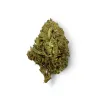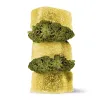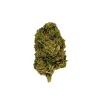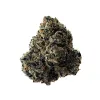Humankind has had a loving relationship with cannabis for millennia. Its use has been well-documented for thousands of years, with our ancestors citing its incredible benefits long before we had the scientific power to understand what we know now. Today, research scientists continue to discover cannabis’s wonderful benefits and effects, as well as new ways the mighty plant can help us be better, feel better, and get better.
The more humans used and studied cannabis plants, the more we discovered, and somewhere along the way, we discovered that, much like other plants, cannabis has different strains. The two most popular types of strains we know today are indica and sativa, as well as the happy middle that are hybrids. But what exactly are the differences between these strains? And how do you know which one is best for you? Let’s dive a little deeper into the history of cannabis, the effects of different strains, and how to find the best strain for your situation.
A (Summarized) History of Cannabis Use
Although its legality in the modern world is hotly debated, humans have been using cannabis for thousands of years. Long before the days of D.A.R.E and Lyndon B. Johnson’s so-called “war on drugs,” ancient cultures included cannabis in their rituals, medical practices, and even their everyday lives.
The Origins of Cannabis
Cannabis use is thought to have originated in Central Asia or western China, with the first ever documented case dating back to between 2700-2800 BCE. Emperor Shen Nung, largely regarded as the father of Chinese medicine, included cannabis in his pharmacopoeia, citing its healing properties for ailments like rheumatism, menstrual problems, gout, malaria, and even absent-mindedness. Although Shen Nung’s pharmacopeia was the first to mention the plant, burned cannabis seeds have been discovered in the graves of shamans in China and Siberia from as early as 500 BCE.
Indian, Hindu, Assyrian, Greek, and Roman texts also mention the many properties of cannabis, reporting a vast array of benefits of using the plant for health problems such as arthritis, depression, inflammation, pain, lack of appetite, and even asthma.
According to Hindu legend, Shiva, the supreme Godhead of many sects, was given the title of ‘Lord of Bhang’ because the cannabis plant was his favorite food. Ancient Hindus believed that the medicinal benefits of cannabis were due to Shiva’s love for the plant, and the pleasure he derived from Hindus indulging in his own favorite meal.
Cannabis in the Americas
In the early American colonies, hemp was grown for textiles and rope due to its growth speed and ease of cultivation. In the 1600s, the Spanish as much as the English required colonies to grow hemp, but these had very low levels of THC, the psychoactive compound largely responsible for marijuana’s high.
In the Americas, cannabis was used as a medicine and even added to the United States Pharmacopeia in 1850. By the 20th century, however, political and racial factors led to the criminalization of cannabis in the United States. Following the Mexican Revolution, xenophobia and racism grew towards Mexican immigrants, some of whom had been using cannabis recreationally and brought these practices with them. These fearful and paranoid sentiments, coupled with stereotypes about immigrants and drug use, led to the prohibition of the use and sale of cannabis by 1937 under the Marihuana Tax Act. A few decades later, in 1970, Richard Nixon repealed this act and replaced it with the Controlled Substances Act, which led to cannabis’s classification as a schedule I controlled substance, leaving it in the company of drugs such as heroin, LSD, and ecstasy.
From there, we know the rest of the story. Darren the Lion began showing up to schools across the nation, warning about the grave “gateway drug” marijuana, legislators grew fearful, not of the dangers of alcohol or tobacco, but of the people smoking weed and watching cartoons at home. It wasn’t until 1996 that California made history by becoming the first US state to legalize medical marijuana use. Since then, 37 other states and Washington D.C. have legalized the plant’s medicinal use, and another 19 states and Washington D.C. have also legalized it for recreational use.
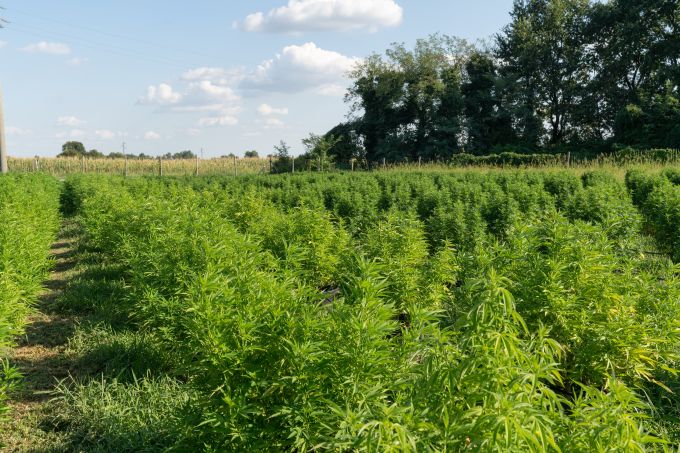
The Rise of Hemp-Derived Cannabinoids
In 2018, Donald Trump signed the Farm Bill into law, which legalized hemp and its derivatives on a federal level. Also known as the Agriculture Improvement Act, this piece of legislation created a legal difference between hemp and marijuana based on THC contents. Under this bill, cannabis plants containing more than 0.3% THC on a dry weight basis are considered marijuana, while cannabis plants not surpassing that 0.3% THC threshold are regarded as hemp.
While marijuana remains an illegal schedule I controlled substance, hemp is perfectly legal to manufacture, sell, buy, and use in the United States. That said, 11 states have placed their own bans on hemp-derived compounds, but at the federal level at least, hemp products are considered legal.
A (Very Brief) History of Strains
The terms “sativa” and “indica” both originated in the 18th century, and they haven’t left the cannabis lexicon ever since. Swedish botanist Carl Linnaeus first identified psychoactive cannabis plants under the name cannabis sativa. A few decades later, French biologist Jean-Baptiste Lamarck identified cannabis indica as a whole different species while studying cannabis plants in India.
The difference between the two? Everything, according to scientists. Sativa plants were taller, narrower, and better suited for warmer climates, while indica plants were shorter, broader, and excelled in colder climates. Sativa strains were energizing, focusing, and made users alert. Indica strains, on the other hand, were sedating and relaxing.
In the early 20th century, Russian botanist Dmitrij Janischewsky identified a third type of cannabis strain, cannabis ruderalis. This strain was different from both, indica and sativa, due to its unique flowering cycle. While other strains flower as a result of available light, ruderalis automatically flowers between 20-40 days after sprouting, but we’ll get more in depth into this type of strain later.
These botanists and biologists are the reason we understand strains the way that we do today, although that distinction is less about psychoactive properties and more about growing conditions and physical characteristics now.
Sativa vs. Indica Chart
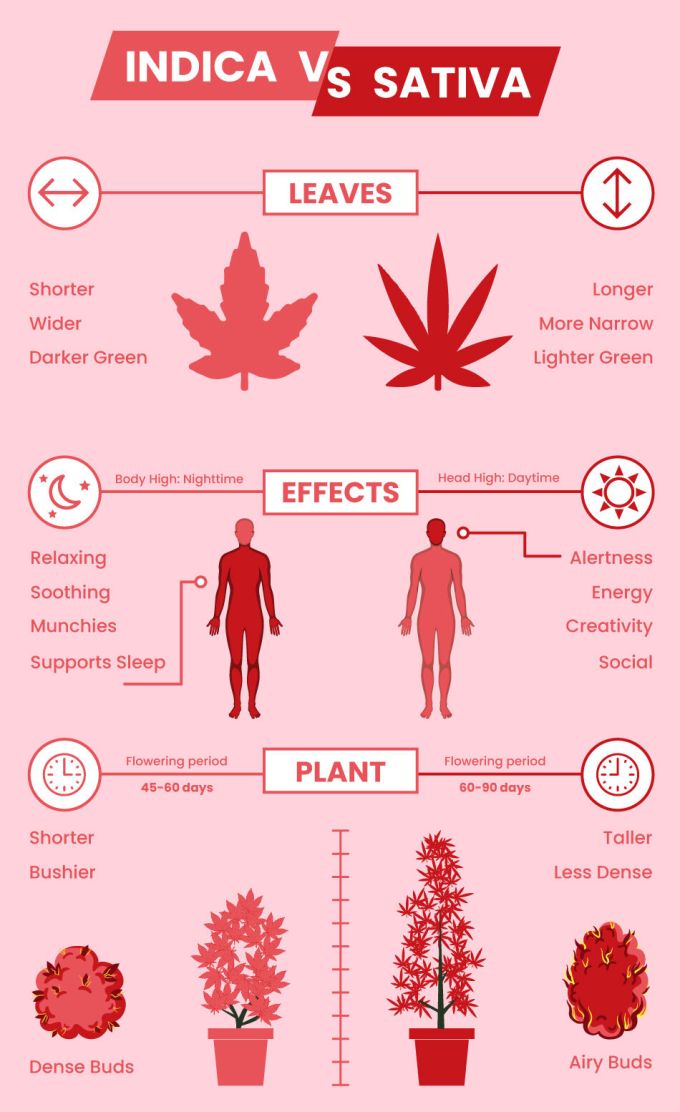
Cannabis Sativa Explained
The origin of Cannabis sativa plants can be traced back to East Asia, although they are now cultivated in hot and dry climates worldwide, including parts of Western Asia, Africa, and Central America. Sativa plants have distinct features, such as tall and slender structures with leaves that resemble fingers. These plants usually grow above 12 feet in height and take longer to reach maturity than other cannabis types.
Sativa strains generally contain lower levels of CBD but higher levels of THC. This makes them ideal for individuals who prefer a cerebral high that targets the brain. The effects of sativa strains include increased energy, improved focus, creativity, and anxiety relief, which makes them perfect for daytime use. In other words, if you want to boost your energy levels and productivity when you have a busy day ahead, sativa strains are an excellent choice.
Growing Tips for Sativa Strains
Sativa plants require lots of light and high temperatures—they are, after all, native to hot climates. They also require a large amount of space, as these plants can grow extremely tall and tend to spread out. Sativa plants are known for their delicate nature and have thinner leaves and less chlorophyll compared to indica strains. Therefore, it's crucial to provide them with the proper amount of light, heat, and humidity. Unlike indica, which might struggle in tropical climates, sativa strains thrive in warm and humid conditions.
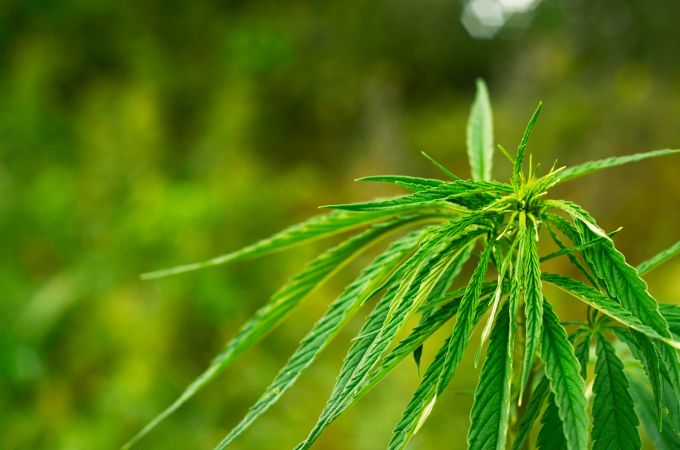
Cannabis Indica Explained
Cannabis indica has its roots in Afghanistan, India, Pakistan, and Turkey, but it is now cultivated across the globe, much like sativa. These plants have adapted to harsh, dry, and tumultuous climates, which is why they thrive in their native Hindu Kush mountains. Indica plants are usually short and bushy, with broad leaves that are chunky in appearance. They grow more quickly than sativa plants, and each one produces a higher number of buds.
Indica strains tend to have higher CBD levels than sativa strains, although this does not necessarily mean that their THC content is lower. Due to their high CBD content, these strains are often used to achieve relaxing, pain-relieving, and munchies-inducing effects. Since they are generally sedative, indica strains are best used at night, after a long day, as a way to unwind, enjoy a good meal, and achieve a peaceful sleep.
Growing Tips for Indica Strains
Indica strains tend to have shorter growing cycles than sativa, which makes them convenient for growers who don’t have too much time or space. These bushes are compact and easy to maintain. While indica strains typically grow in a shape resembling a Christmas tree, growers can utilize various techniques to control and even out the canopy. Topping and low-stress training are just a couple of methods that can be used to shape the plant and promote optimal health and yields. Once the desired shape is achieved, the vegetative phase can be ended by reducing the hours of light exposure to 12 hours on and 12 hours off, initiating the flowering phase.

Hybrids Explained
Hybrid strains are a combination of indica and sativa strains, and they are usually cultivated in farms or greenhouses using two or more cultivars. There are four types of hybrid strains: sativa x sativa, sativa x indica, indica x sativa, and indica x indica.
Breeding new strains of cannabis follows the same process as with other plants, which involves pollinating a female plant with male pollen. However, in hybrid creation, selective breeding is used in a controlled environment, where growers choose the female plant and male pollen with specific traits to breed together. Seeds that germinate from this process are considered first-generation hybrids of both parents, and those with the desired traits are bred again. This process is repeated across three or more generations to stabilize the desirable traits.
Hybrid strains have varying properties that depend on the combination of their parent plants. They are often bred to increase THC percentages, but the ratio of CBD and THC varies with each hybrid strain. The effects of hybrid strains can range from being more sativa-like or indica-like, depending on which parent has dominant genes. The properties of hybrid strains are unique and can be hard to pinpoint, but they offer a wide range of effects for cannabis users.
Because the term “hybrid” simply blankets over thousands of strains, it’s hard to make generalizations about the cannabis strains that fall under this definition. An indica x indica hybrid will have completely different set of strengths, effects, and growth techniques than an indica x sativa or a sativa x sativa hybrid. When it comes to hybrids, the best thing to do, whether for growing or ingesting, is to have a clear understanding of the strain’s parents and therefore, what to expect.
Sativa vs. Indica: The Effects
As previously mentioned, indica and sativa strains have vastly different physical and mental effects on users. While sativa is great for energy, focus, and day-time activities, indica strains are terrific for pain relief, relaxation, and sleep improvement. This is because of their cannabinoid concentrations.
CBD is a well-loved non-psychoactive cannabinoid used in the medical field for a plethora of ailments, including pain relief, anxiety management, and better sleep. Indica strains contain more CBD than sativa strains, which makes them more favorable in the eyes of those seeking specific effects like relief from pain or insomnia. At the same time, sativa strains are more abundant in THC, which leads to more of a mind high than a body high. Let’s take a closer look at the psychoactive effects of both of these types of strain.
Sativa vs. Indica: The High
Sativa strains are well-known for their cerebral high, making them the perfect choice for those who want to laugh and have fun with friends. They can also induce a reflective state of mind, allowing users to focus on thoughts and emotions that were not as prominent before. Sativa strains are invigorating and energizing, making them ideal for social and task-oriented situations. They induce a feeling of comfort and focus, leaving users talkative, active, and with a happy-go-lucky attitude.
Indica strains, on the other hand, offer a body high that is deeply relaxing and sedative. They induce a soothing numbness that is highly desirable. Indica strains are perfect for relaxing nights at home, where users can lounge on the couch for hours on end. These strains are also notorious for causing intense munchies, so be sure to have snacks nearby. However, getting off the couch may seem like a daunting task, as users will be deeply relaxed. Indica strains provide the full spectrum of cannabis's most relaxing, soothing, and sedating properties, but users may have to deal with the munchies!
Cannabis for Pain Relief: Sativa or Indica?
Although both cannabis strains can provide a great high, indica is the preferred choice for pain relief. Indica strains have higher CBD content than sativa strains, making them highly effective in soothing pain and numbing the body. The sedating body high that indica strains induce makes them the perfect option for people seeking to treat pain.
A study published in the Journal of Alternative and Complementary Medicine in 2014 found that users tend to prefer sativa strains for improving energy and mood, while they reach for indica strains when it comes to pain management, sedation, and sleep. Indica strains have been used to alleviate chronic or acute pain, including pain caused by conditions like arthritis. Additionally, cannabinoids were found to be effective in regulating nausea and vomiting in a study published in the National Library of Medicine in 2011.
Therefore, although both indica and sativa strains can provide enjoyable highs, research suggests that indica strains are better suited for people seeking pain relief.

Indica & Sativa Edibles
When it comes to strains of cannabis, their effects are not the only factor to consider. The method of consumption can also impact how a strain affects you. For example, taking one or two puffs from a vape will produce a light psychoactive experience, with less pronounced effects than smoking a joint or blunt. Methods like dabbing, on the other hand, deliver intense effects immediately, but are not recommended for beginners.
Edibles are generally the best option for those seeking long-lasting and potent effects. However, edibles can be tricky because they take longer to kick in than other methods, making it difficult to accurately dose them. It's essential to wait for at least an hour or two for the first round to take effect before taking more edibles.
When you take edibles, the THC must first bypass your digestive system to enter the bloodstream. Additionally, when THC is ingested orally, it is converted into 11-hydroxy-THC, which is more potent than smoking weed, according to a 1973 study published in the National Library of Medicine.
Dosage is important when taking any cannabinoid by any means, whether it’s smoking, vaping, or eating, but it’s especially important when it comes to edibles for the reasons listed above. Edibles always result in a more intense psychoactive experience, so you don’t want to overindulge only to end up having a bad time. But dosing isn't an exact science—it depends on many individual factors such as weight, tolerance, metabolism, and others. When taking edibles, always dose lower than you think you should. If after an hour or two you still want a bigger kick, feel free to take more.
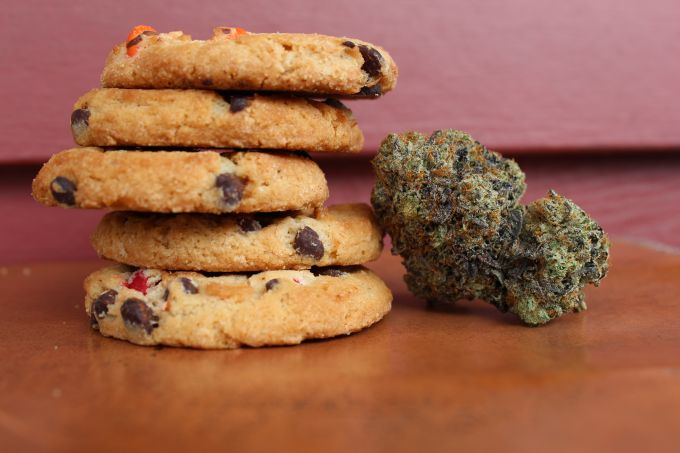
Cannabis Ruderalis Explained
Remember ruderalis, the third type of strain we talked about at the very start of this article? It’s back baby! Let’s dive a little deeper on what makes cannabis ruderalis so special.
There is some disagreement among botanists about whether cannabis ruderalis qualifies as a separate species or subspecies. Ruderalis is a term used to describe plants that grow in environments despite any human or natural disturbances. Cannabis ruderalis is native to Asia, Central and Eastern Europe, and Russia. Some believe that it is a descendant of indica strains that adapted to harsh climates and shorter growing seasons in the northern regions.
Cannabis ruderalis plants are short and sturdy, with thick stems. They automatically flower between 20 to 40 days after vegetation and are ready for harvest in 70 to 110 days from seed. The plant's low concentrations of THC minimize its effects, but its stability and short grow cycle make it attractive to breeders who want to benefit from its autoflowering trait. When crossed with other strains, ruderalis gives breeders the ability to create a hybrid with autoflowering properties and the advanced potency and flavor profile of its partner.
Strains made with ruderalis are often labeled "automatic" or "autoflowering." They are not known for their desirable flavors or aromas but are used to strengthen new hybrids. Crossing ruderalis with other strains creates a hybrid with an automatic switch from vegetative growth to the flowering phase, making the process much quicker and efficient for growers and breeders. In essence, crossing cannabis ruderalis with indica or sativa strains results in a new strain with the desirable effects of one parent with the autoflowering properties of its ruderalis parent—AKA, a win for growers!
Different Strains for Different Pains
Much like people, cannabis strains are diverse and unique in their own ways. What might work to alleviate one thing may not be as effective for something else, and the types of strain you choose to use depend solely on the desired effects you seek from them.
There are thousands of strains in the cannabis world, and while they may share some similarities, they’re all different and work best for different conditions. Although there are many reasons you might want to use cannabis, here are a few of the most popular reasons as well as three of the best-equipped strains to handle the job:
|
If you… |
Use… |
|---|---|
|
Have insomnia or want better sleep |
|
|
Battle with anxiety or stress |
|
|
Seek pain relief |
|
|
Want more energy and motivation |
|
|
Need help with appetite stimulation |
|
These strains have all proven effective for these specific conditions due to their cannabinoid and terpene contents, which we’ll explore a little later in the article. Northern Lights, for example, is a powerful indica, meaning it has intense sedating and pain-relieving properties. This makes this strain amazing for those looking for more restful sleep or for those suffering with bouts of physical pain. Other strains, such as Girl Scout Cookies, help to stimulate the appetite, making it perfect for those struggling with food intake.
Because different strains have different sets of characteristics, they’re effective at achieving different things. If your desired effect or condition isn't listed in the chart, feel free to do some of your own research and find the best strain for your needs!
Choosing the Perfect Strain
Now that you have a good understanding of the different strains of cannabis, it's important to consider a few other factors before choosing the perfect strain for you. Although indica, sativa, hybrid, and ruderalis strains each have their own unique effects, each individual strain has a distinct cannabinoid content that can affect how your body reacts. Therefore, it's important to consider the following factors:
Tolerance Levels
Make sure to choose a strain with a manageable THC content that matches your tolerance level. Some strains may seem appealing, but if they contain too much THC, it could lead to paranoia, anxiety, or other unpleasant effects. Be realistic with the level of THC you can handle from a strain—using cannabis isn't a contest to see who can take the most, it’s a way to feel more comfortable and feel better!
Correct Dosages
Proper dosing is essential to a positive experience with cannabis. Starting with a low dose and working your way up to the desired effect is recommended. Overdosing on THC can cause confusion, fatigue, dizziness, increased heart rate, anxiety, paranoia, or even panic. As previously mentioned, always start with a lower dosage than you think you need and work your way up from there. Here’s a recommended dosage chart based on what kind of dose you’re looking for:
|
Level |
Appropriate Dose |
|---|---|
|
Low Dose |
1-2.5mg |
|
Medium Dose |
2.5-15mg |
|
High Dose |
30-50mg |
|
Huge Dose |
50-100mg+ |
Other Aspects to Consider
- Your Body: Everybody's body is unique, and how your body reacts to cannabis may differ from someone else's. Your weight, metabolism, and tolerance level can affect how you react to cannabis, so keep these things in mind when choosing a strain!
- Desired Effects: Your desired effects will ultimately determine which strain works best for you. Indica strains provide a relaxing and sedating experience, sativa strains offer an energizing and focusing effect, and hybrids provide a combination of both. Be sure to do your research and choose a strain that matches your desired experience.
Experimenting
An important aspect of choosing the right strain for you is experimenting with many different strains and finding out which one is best for yourself. You can read all about every strain in existence, you can do your research and dive deep into the effects and benefits of each, but the truth is, you won't know until you try them.
Cannabis affects different people in different ways, so while reading about a strain’s effects online can be an excellent indicator on what kind of experience you’ll have, you might find that your body doesn’t quite react to it in the same way as other users. Consider keeping a journal of how each strain makes you feel and how it impacts your body, this can help you figure out which strain works best depending on what you need it for. Remember, different strains work for different reasons, so the same strain that might help you unwind and relax won't be the same as the strain that’ll help you be productive or creative.
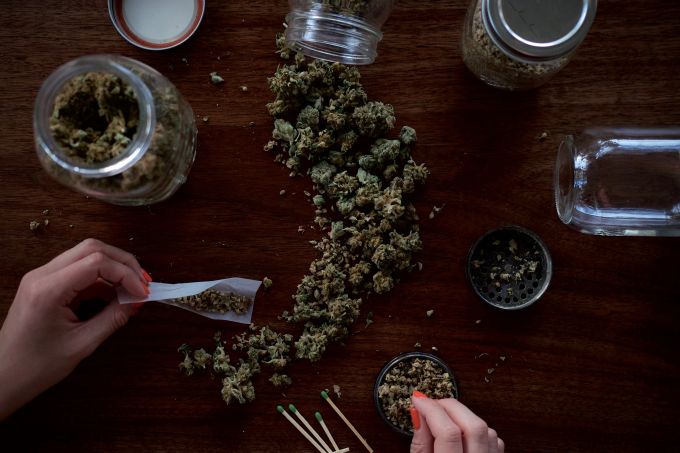
Understanding Cannabis Compounds - Cannabinoids & Terpenes
Cannabis has a vast range of compounds, and while nearly 480 of them have been identified, only about 100 are classified as cannabinoids. These are a group of closely related compounds that include the active elements of cannabis. While CBD and THC are the most popular cannabinoids, cannabis contains several others that are grouped into seven subclasses: Cannabichromenes (CBC)
- Cannabidiol (CBD)
- Cannabigerols (CBG)
- Cannabinol (CBN)
- Cannabinodiol (CBDL)
- Tetrahydrocannabinol (THC)
- Other cannabinoids like cannabicyclol (CBL), cannabielsoin (CBE), and cannabitriol (CBT)
These cannabinoids interact with specific receptors, such as CB1 and CB2, located throughout the body. The effects they produce depend on the brain area they influence; some may impact memory, cognition, and psychomotor abilities, while others affect pain perception, reward and pleasure responses, and other bodily functions.
Cannabinoids are classified mainly based on their psychoactivity levels. While cannabinoids like CBG, CBC, and CBD do not produce psychoactive effects, others like THC, CBN, and CBDL have varying degrees of psychoactivity. The tetrahydrocannabinols (THCs), which include delta 8, delta 9, and delta 10, are highly popular for their relatively strong psychoactive effects, with delta 9 being the most well-known and commonly occurring psychoactive cannabinoid found in cannabis.
Terpenes are not exclusive to cannabis; they can be found in all kinds of plants and even in some animals. They are natural chemical compounds consisting of volatile unsaturated hydrocarbons found in the essential oils of plants. Essentially, terpenes are responsible for the unique smell and taste of plants. In cannabis, terpenes affect the strain's aroma and flavor and may even impact the effects that specific strains produce.
There are several common terpenes, including Bisabolol, Caryophyllene, Linalool, Myrcene, Ocimene, Pinene, Terpinolene, Limonene, Humulene, and Eucalyptol. The type of terpenes in a particular strain will determine whether it smells fruity and sweet or earthy and sour, as well as the flavor that it will have. Besides flavor and aroma, terpenes may also have therapeutic benefits, such as helping with insomnia, inflammation, irritation, nausea, anxiety, and pain.
The Entourage Effect
So why are cannabinoids and terpenes so important? Obviously, cannabinoids like THC make your weed psychoactive, but what about all that other stuff? They’re much more important than you think—they make the entourage effect a reality.
The entourage effect is a concept that suggests the compounds in cannabis, including cannabinoids and terpenes, work best when used together. Rather than just taking in THC or CBD, our bodies absorb numerous compounds that each possess unique benefits and effects. A recent study found that cannabinoids and terpenes may be effective at treating mood and anxiety disorders when used in conjunction. This is a prime example of how the entourage effect works— all the compounds in cannabis work together synergistically to enhance each other's effects and provide the user with a better overall experience. CBD or THC alone may not be as effective as when combined with other compounds found in the plant, such as terpenes. So, in other words, the terpenes and cannabinoids in your cannabis don’t just make it psychoactive or determine a strain’s smell, they work together to give you a more wholistic set of benefits!
Conclusion
The world of cannabis strains is vast and diverse, and the decision of which one to choose can be overwhelming. Understanding the differences between an energizing sativa, a relaxing indica, and well-balanced hybrid strains, as well as the importance of terpenes, cannabinoids, and how they lead to the entourage effect, is crucial to finding the right strain for your needs.
But remember, experimentation is key! Try out different strains and see how they make you feel. Each strain, even if they belong to the same strain type, has different effects, flavors, and cannabinoid contents, so branch out and do some strain exploring before settling for the first one you try. Who knows, you may just find your new favorite strain that brings out your inner Cheech or Chong!



